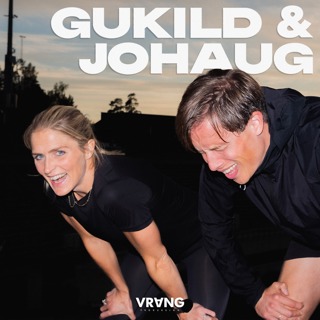
Joe Biden’s Rebuttal
Joseph R. Biden Jr.’s plan for winning the presidential election relies on putting together African-American voters of all ages, including younger Black people who are less enthusiastic about him, and white moderates who find President Trump unacceptable.At last week’s Republican National Convention, the Trump campaign appeared to be sowing discord within that coalition. By framing the response to unrest in cities as binary — you are either for violence or for the police — Republicans seemed to be daring Mr. Biden to challenge young Black voters.In a speech in Pittsburgh yesterday, Mr. Biden rejected that choice. Instead, he recognized the grievances of peaceful protesters, while denouncing “the senseless violence of looting and burning and destruction of property.”Today, we examine whether the speech worked — and what it means for the rest of the election campaign.Guest: Alexander Burns, a national political correspondent for The New York Times.For more information on today’s episode, visit nytimes.com/thedaily Background reading: Over the weekend, protesters and Trump supporters clashed in Portland, resulting in the fatal shooting of a man affiliated with a right-wing group. The shooting immediately reverberated in a presidential campaign now entering its most intense period.In his speech in Pittsburg, Joe Biden deflected Republican criticism and attempted to refocus the spotlight on the president’s character and leadership in the midst of the pandemic. Subscribe today at nytimes.com/podcasts or on Apple Podcasts and Spotify. You can also subscribe via your favorite podcast app here https://www.nytimes.com/activate-access/audio?source=podcatcher. For more podcasts and narrated articles, download The New York Times app at nytimes.com/app.
1 Sep 202026min

‘Who Replaces Me?’
This episode contains strong language.As a police officer in his hometown of Flint, Mich., Scott Watson has worked to become a pillar of the community, believing his identity has placed him in a unique position to do his job. He has given out his cellphone number, driven students to prom and provided food and money to those who were hungry.After watching the video of the killing of George Floyd, his identity as a Black police officer became a source of self-consciousness instead of pride.Today, we speak to Mr. Watson about his career and the internal conflicts that have arisen from his role.Guest: Scott Watson, a Black police officer in Flint, Mich. For more information on today’s episode, visit nytimes.com/thedaily Background reading: Many Black and Hispanic officers in New York City have found themselves caught between competing loyalties in the wake of the killing of George Floyd. Subscribe today at nytimes.com/podcasts or on Apple Podcasts and Spotify. You can also subscribe via your favorite podcast app here https://www.nytimes.com/activate-access/audio?source=podcatcher. For more podcasts and narrated articles, download The New York Times app at nytimes.com/app.
31 Aug 202041min

The Sunday Read: 'In the Line of Fire'
Many American states use the labor of inmates to help fight its fires, but none so more than California. Using incarcerated firefighters saves the state’s taxpayers an estimated $100 million a year.The women that choose to enter the firefighting camps are afforded better pay, by prison standards, and an improved quality of time served. However, the money they earn from putting their lives on the line is dwarfed by the salaries of the civilian firefighters they work alongside — one woman reports to earn $500 a year, compared with the $40,000 starting salary on the outside.On today’s episode of The Sunday Read, Jaime Lowe explores California’s invisible line of defense against wildfires.This story was written by Jaime Lowe and recorded by Audm. To hear more audio stories from publishers like The New York Times, download Audm for iPhone or Android. Subscribe today at nytimes.com/podcasts or on Apple Podcasts and Spotify. You can also subscribe via your favorite podcast app here https://www.nytimes.com/activate-access/audio?source=podcatcher. For more podcasts and narrated articles, download The New York Times app at nytimes.com/app.
30 Aug 202032min

Donald Trump Jr.’s Journey to Republican Stardom
For much of his life, Donald Trump Jr. has been disregarded by his father. He played only a bit part in the 2016 campaign and when the team departed for Washington, he was left to oversee a largely unimportant part of the Trump Organization. But after The New York Times revealed that he had played an integral role in organizing the Trump Tower meeting between campaign officials and Russians promising information on Hillary Clinton, the younger Mr. Trump struck back hard at his father’s detractors and the media, finding a voice and an audience. Aggressive, politically incorrect and with an instinctual understanding of the president’s appeal, he has become a conservative darling and his father’s most sought-after surrogate. Today, we look at his rise to prominence. Guest: Jason Zengerle, a writer at large for The New York Times Magazine. For more information on today’s episode, visit nytimes.com/thedaily Background reading: Read Jason Zengerle’s account of how Donald Trump Jr.’s became his father’s most valuable political weapon. Subscribe today at nytimes.com/podcasts or on Apple Podcasts and Spotify. You can also subscribe via your favorite podcast app here https://www.nytimes.com/activate-access/audio?source=podcatcher. For more podcasts and narrated articles, download The New York Times app at nytimes.com/app.
28 Aug 202034min

On the Ground in Kenosha
This episode contains strong language.The shooting of Jacob Blake, a Black father from Kenosha, Wis., by a white police officer has reverberated through the city, fueling protests and unrest. There have been marches and demonstrations, as well as instances of destruction: businesses and property set alight, fireworks launched at the police.On Tuesday night, a group of armed men, who claimed to be there to protect the community, arrived. Three protesters were shot, two of whom died. Kyle Rittenhouse, a white 17-year-old from Illinois, is suspected of being the gunman.We speak with Julie Bosman, a national correspondent for The Times, about what is happening in her hometown.Guest: Julie Bosman, a national correspondent for The New York Times.For more information on today’s episode, visit nytimes.com/thedaily Background reading: Kenosha has become the latest flash point in a season of unrest that began with the killing of George Floyd.Kyle Rittenhouse, 17, is facing a charge of first-degree intentional homicide. The Times’s visual investigation team tracked his movements on Tuesday night.The turmoil in Wisconsin has led some residents to feel that Democratic leaders are failing to keep control of the situation. Subscribe today at nytimes.com/podcasts or on Apple Podcasts and Spotify. You can also subscribe via your favorite podcast app here https://www.nytimes.com/activate-access/audio?source=podcatcher. For more podcasts and narrated articles, download The New York Times app at nytimes.com/app.
27 Aug 202029min

Trump’s Suburban Strategy
At the 1968 Republican National Convention, Richard Nixon made an appeal to voters in the suburbs concerned about racial unrest across the United States after the assassination of Martin Luther King Jr. They helped deliver him the presidency that year, cementing suburbanites’ role as an integral voting bloc.The 2020 election is also taking place against a backdrop of mass protests and unrest over racial justice. And speaker after speaker at the Republican National Convention has used the themes and language of 1968 to play on the perceived fears of suburban voters — cities on fire, the need to restore law and order.But a strategy that worked for Richard Nixon in 1968 might not be effective for Donald Trump in 2020.Today, we speak to Emily Badger about the power of the suburban vote and explore whether Republican messaging on the Black Lives Matter protests and law and order will land.Guest: Emily Badger, who covers cities and urban policy for The New York TimesFor more information on today’s episode, visit nytimes.com/thedaily Background reading: The Republican National Convention has presented the president as a steady steward of the country’s promise — a message that seemed tailored to suburban voters.President Trump is attempting to win over suburban voters by playing to their perceived fears. But polls show they disapprove of the president’s job performance in general and his handling of race relations in particular. Subscribe today at nytimes.com/podcasts or on Apple Podcasts and Spotify. You can also subscribe via your favorite podcast app here https://www.nytimes.com/activate-access/audio?source=podcatcher. For more podcasts and narrated articles, download The New York Times app at nytimes.com/app.
26 Aug 202032min

Where We Stand on the Pandemic
In the U.S., emergency-use authorization has been granted for convalescent plasma, the efficacy of which is yet to be robustly tested. For some, this echoes the situation with hydroxychloroquine and the government’s subsequent U-turn on its rollout.Meanwhile, America’s infection rate appears to be flattening out — but at tens of thousands of cases per day. This stands in stark contrast to China, where daily cases are under 40.Overseas, a Hong Kong resident has been reinfected with the virus, the first recorded instance of a second bout. And Russia and China have begun distributing vaccines, sidestepping Phase 3 safety trials to the incredulity of immunologists and vaccine executives.We check back in with Donald G. McNeil Jr. on the coronavirus and the impact of these developments.Guest: Donald G. McNeil Jr., a science and health reporter for The New York Times For more information on today’s episode, visit nytimes.com/thedaily Background reading: A 33-year-old man in Hong Kong was infected with the coronavirus for a second time. It is unclear how often people might become reinfected, and how soon after the first bout.Despite flattening, America’s infection rate remains one of the highest in the world.The F.D.A. has permitted the expansion of convalescent plasma treatment after pressure from President Trump.Russia has approved a coronavirus vaccine and is set to begin mass vaccinations in the fall. China has reportedly been giving experimental vaccines to high-risk groups since July. Subscribe today at nytimes.com/podcasts or on Apple Podcasts and Spotify. You can also subscribe via your favorite podcast app here https://www.nytimes.com/activate-access/audio?source=podcatcher. For more podcasts and narrated articles, download The New York Times app at nytimes.com/app.
25 Aug 202025min

A Surge in Shootings
Gun violence is on the rise in New York City. By the end of July, there had been more shootings in 2020 than in all of 2019. Shootings have risen in other metropolises, too, including Atlanta, Chicago, Denver and Houston.Several theories have been advanced about why. Experts on crime say the coronavirus outbreak has deepened the endemic problems that often underlie gun violence, including poverty, unemployment, housing instability and hunger.Police leaders also cite budget cuts and a political climate that has made officers reluctant to carry out arrests because of what they see as unfair scrutiny of their conduct.Today, we look at how the various diagnoses could influence activists’ calls for the police to be defunded.For more information on today’s episode, visit nytimes.com/thedaily Background reading: “Right now, communities are being held hostage by the cops and the robbers at the same time,” a City Council member from Queens said. The summertime surge in shootings is unlike anything New York has seen in two decades. The summer usually brings with it an increase in violent crime. Across the U.S., as many states emerge from lockdown, the increase has been steeper than usual. Subscribe today at nytimes.com/podcasts or on Apple Podcasts and Spotify. You can also subscribe via your favorite podcast app here https://www.nytimes.com/activate-access/audio?source=podcatcher. For more podcasts and narrated articles, download The New York Times app at nytimes.com/app.
24 Aug 202030min





















